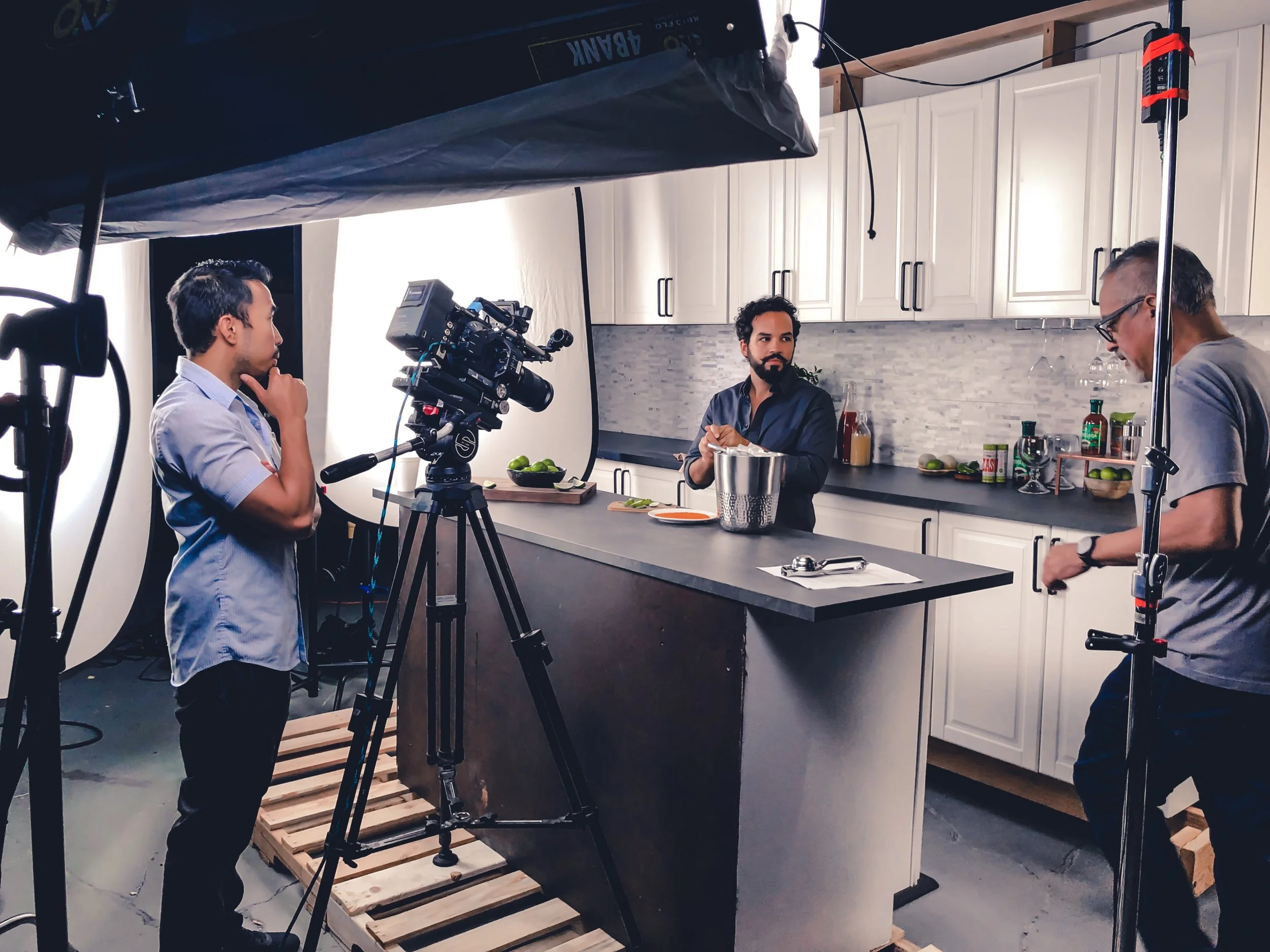Learn how to create captivating product videos using this tripod trick shot technique by V-Flat World. Elevate your video content with innovative techniques and expert tips.
5 Basic Camera Movements in Film
Gearing up for shooting a scene and don’t know which camera movement is right for your production? Experimenting with a shot and are looking to approach it from another angle? Positioning and moving your camera can let your audience know more about your scene. We’ve generated a list of the five basic camera movements you can experiment with in your films!
Cinematography becomes more complicated as you go from static to dynamic shots. We're here to help you understand the terminology and functions of the 5 basic camera moves in filmmaking.
#1 - Pan. The pan movement, short for panorama, is a horizontal camera move where the camera is stationary, but the direction it faces moves left or right. Pans are usually made through the use of a tripod, but can also be made through other methods, such as handheld.
#2 - Tilt. The tilt movement is similar to the pan, but is a vertical move, where the direction the camera faces moves up and down. Similar to the pan, tilts are usually created on a tripod, but can be created through the use of handheld.
#3 - Tracking / Trucking. Tracking shots, also known as trucking shots, are created when the camera is physically moved left or right, often to follow a subject. These shots may be created through the use of dollies, steadicams and other equipment.
#4 - Dolly. Dolly shots are created when the camera is physically moved forwards or backwards. They created a similar effect to zooming, as they change how big or little a subject is in the frame. As the name suggests, dolly shots may be created through the use of an actual dolly, but may also be created with steadicams, gimbals, and other equipment.
#5 - Pedestal. Pedestal shots, likely the least used on this list, are shots where the camera is physically moved up and down. They could be created through the use of adjustable tripods, monopods, or cranes.
Basic Camera Stands in 2019
You just finished recording your video and while you look at the footage, you find that the camera shakes in certain parts of the video. You try to steady your hands in the next recording but to no avail. No need to create makeshift camera stands! Our research shows you 5 basic camera stands that should keep your videos smooth for the next production.
Unless you’re making a found footage film, having good camera stands is an absolute must. Shaky footage immediately gives off an impression of being an amateur. There are many more options than commonly known to keep your shots smooth, and we’re here to help you navigate a few of the basics.
Tripods:
Tripods are pretty simple. You put your camera on them, and you can get a stable shot. You can lengthen and shorten the legs to get higher and lower angles, and you can pan left and right, and tilt up and down. These are perfect for mostly still shots, but are lacking if you want to have any movement outside of pans and tilts.
Monopod:
Even though monopods are essentially a camera on a stick, they are still incredibly useful. These are used in situations where tripods are too bulky or heavy to film with, such as in public shoots. Monopods are used with the actual monopod as one leg and your own legs as the other two. They can also be used to get high angle shots, but do not provide as stable shots as other options. They are also generally fairly inexpensive.
Glidecams and Gimbals:
Glidecams and gimbals are great for mobile shots. They both keep cameras steady during motion, but are fairly different. Glidecams keep the camera stable through weights and gravity, while gimbals use various battery-powered mechanisms. Both take a long time to set up. Glidecams are less expensive generally, but also has a steep learning curve. Gimbals are easier to use, but are also quite expensive. Which you get really depends on if you are willing to take the time to master the glidecam, or want the gimbal’s mechanisms to do it for you.
Sliders:
Slides are essentially tracks that you attach your camera to. These allow for smooth, dynamic shots, of either horizontal, vertical, or diagonal movement.
